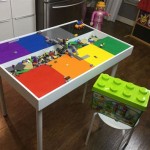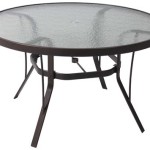Tiling A Table Top: Essential Considerations
Tiling a table top is a rewarding project that can transform a lackluster piece of furniture into a stunning focal point. However, to achieve a flawless finish, it's crucial to consider several essential aspects. This guide will walk you through the key steps and considerations involved in tiling a table top, ensuring a beautiful and durable result.
1. Selecting the Right Tiles:
Choosing the right tiles is paramount for both aesthetics and practicality. Consider the size, shape, color, and texture of the tiles. Smaller tiles create a more intricate look, while larger tiles provide a sleek and modern aesthetic. Mosaic tiles add a touch of elegance, and textured tiles offer a unique tactile experience. Porcelain and ceramic tiles are durable and easy to clean, making them ideal for table tops.
2. Preparing the Surface:
Before applying tiles, the table top surface must be properly prepared. Clean the surface thoroughly to remove any dirt, oil, or debris. Sand any uneven areas to create a smooth surface. Apply a bonding agent to ensure the tiles adhere securely to the tabletop. Follow the manufacturer's instructions carefully for applying and drying the bonding agent.
3. Laying Out the Tiles:
Plan the tile layout before applying the tiles to avoid any last-minute adjustments. Dry-fit the tiles on the table top to visualize the overall design and make any necessary adjustments. Use a level to ensure that the tiles are laid correctly and prevent any unevenness. Mark the tile positions on the tabletop with a pencil to guide the tiling process.
4. Applying the Tiles:
Spread a thin layer of tile adhesive onto the tabletop using a notched trowel. Press the tiles firmly into the adhesive, ensuring that they are level and even. Use tile spacers to maintain consistent spacing between the tiles. Once the tiles are set, remove the tile spacers. Grout the spaces between the tiles using a grout float. Smooth out the grout and wipe away any excess with a damp sponge.
5. Finishing the Surface:
Allow the grout to dry completely and cure before sealing the surface. Apply a clear sealant to protect the tiles and grout from stains and moisture. Use a soft cloth to gently wipe down the surface and remove any excess sealant. The sealed surface will provide a durable and easy-to-clean finish for your table top.
Conclusion:
Tiling a table top is a detailed process that requires careful planning and attention to detail. By following the essential steps outlined in this guide, you can transform a plain table top into a stunning and functional piece of furniture. With the right materials, proper preparation, and precise execution, you can create a tile-topped table that will enhance the beauty and functionality of your home for years to come.

Diy Tile Tabletop Seeking Lavender Lane

Diy Tile Tabletop Seeking Lavender Lane

How To Tile A Table Top Or Other Furniture Decor The Easy Way Artsy Rule

How To Tile A Table Top With Your Own Ceramic Tiles

Diy Tile Tabletop Seeking Lavender Lane

Hire A Hubby How To Tile Tabletop

Tiled Table Top With Wooden Edging Gyro Commercial Furniture

Tile Top Patio Table Makeover Chica And Jo

How To Mosaic A Table Running With Sisters

How To Make An Outdoor Tile Coffee Table Using Leftover Tiles








